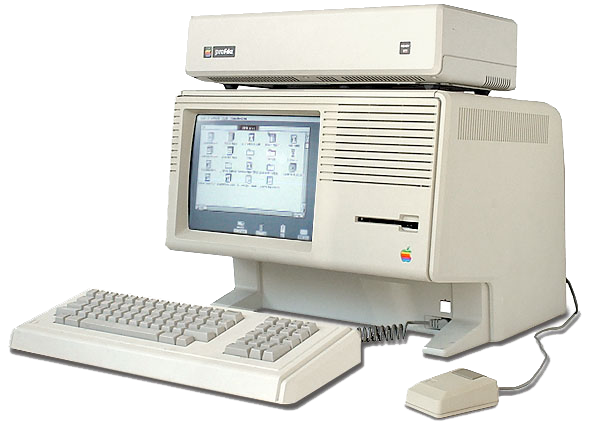Apple Lisa
Introduction

Apple Lisa was meant to take over the market after the popularity of Apple II. It was born as a project that has to be assigned to Steve Wozniak but in the end took over John Couch1 and Lisa born under his supervision. At the beginning Lisa was meant to became a $2’000 business machine, or at least that was what the company approved in 1979. They also set the timeline to the year 1981 for which the computer had to be released. Apparently Rothmuller understood quickly that the time disposed for the project was to little as they couldn't develop the new hardware required in such a short period and as he told his doubt to Steve Jobs, as a result, he was removed from his position of project manager and replaced by John Couch. Just to understand the particular and very innovative period that Apple was living I have to point out that contemporarily at the start of the Lisa project, Jef Raskin, was waiting for the approval to the Macintosh project and in the mean time decided to help the research for Lisa. In the late 1979 were made only a few step in the creation of the computer, to be clear, Apple haven't chosen the processor the machine will be based on, the work group around Lisa was actually still discussing the fact that they were building something too similar to the Apple II.
The Xerox PARC influence
At this point something important happened: Jobs was invited from Raskin2 to visit Xerox labs to get inspiration. Steve Jobs declined every time because of the fact that he seems to dislike Raskin and only when a mutual friend of the two convinced Jobs to go to the Xerox he surrendered and went for it. I will now go a bit further in the history to the most important thing: during a second tour in Xerox labs Jobs understood the importance of the interface of the Xerox Alto, this machine was one among an entire computer spices to have a interface that was completely different from the simple black screen with white code written on it. This story had to be explained because from this point born a complete new vision of the all Lisa project: suddenly the purpose wasn't to build only a better business machine anymore but they wanted to implement the software based on the innovation already created at PARC. The marketing and planning manager of Lisa, Trip Hawkins, include in the specifications the essential need of a graphical user interface! But it wasn't the only important modify done on the production list, he spoke also of a mouse and a object oriented user interface as well as networking systems. At this point, with the help of some Xerox employ, the real Lisa project actually started.
The Hardware of Lisa
At this point i will skip the history of the software developed for Lisa, of which you can find more information here, and talk about the hardware that were designed for it: the group decide that a 16-bit processor would be the minimum necessary to optimise the use of a bitmapped display and they spend some time choosing the right processors to use, considering the Intel 8088 and the Zilog Z8000. At the end they decid to use the Motorola 68000. Another discussed decision was the choice of the floppy drive: Steve Jobs, before were pushed out of the project, fought for the use of the Apple’s 5.25’’ “Twiggy” floppy drive. This particular unit was very unreliable and still had some problem at the time but the engineer decided to go for it, assuming that the problems will be resolved for the launch of Lisa on the market.To keep the dimension of the computer to a small size the work group decide to put the CRT and the CPU in the same case and they actually thought to mount it so that were easy to made an upgrade on it or to just do a routine service for it. This little detail can seems pretty obvious but in reality it was the beginning of the idea that machines could be hardware updated and not only in term of software.
A price to high...
By 1983 Lisa was ready and released. The product was large publicised and both Times and the Newsweek published a lot of article about the product and Apple talking of a revolution. The release price was set to $9,995 that was enormous but necessary to cover the millions of dollars that the company invested in the machine. After a pretty good start in term of selling's the all thing began irremediably to sink due to the to high price and also to the release of the Macintosh in 1984. During 1985 the seals dropped even more than the expectation and by 1986, after several revisions, the Lisa was abandoned.
Commercial of the Apple Lisa:
External Links
- [Visited on 06/11/2014] John Couch
- [Visited on 06/11/2014] Jef Raskin
- [Visited on 06/11/2014] Image Apple Lisa uder fair use
- [Visited on 06/11/2014] www.lowendmac.com